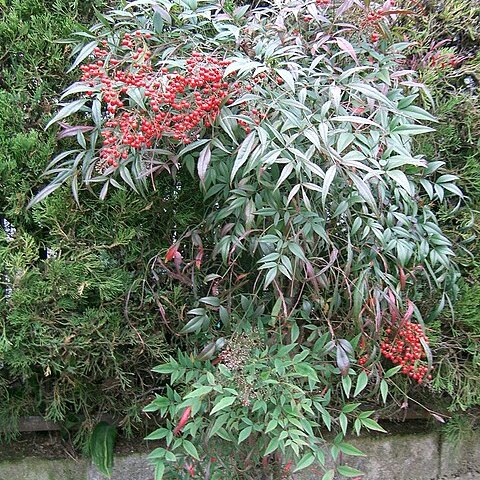Shrubs, evergreen, without rhizomes. Leaves alternate, 2 or 3 × pinnately compound, estipulate; petioles and petiolules swollen at base; leaflets entire, venation pinnate. Inflorescences terminal or axillary panicles of dozens to hundreds of flowers. Flowers bisexual, 3-merous; bracteoles present. Sepals numerous, spirally arranged. Petals 6, larger than sepals, basally without nectaries. Anthers dehiscing by longitudinal slits; pollen grains prolate, 3-polyporate, exine distinctly reticulate. Ovary ellipsoid; placentation submarginal; style short; stigma entire or crisped. Fruit berries, globose. Seeds 1-3; aril absent. 2n = 20.
Shrubs with clumping, cane-like stems, glabrous, without spines. Leaves evergreen, alternate, 2-or 3-pinnate; petioles stem-clasping. Inflorescences terminal, paniculate, many-flowered. Perianth white to cream; sepal-like members numerous; inner whorl petal-like, 6. Stamens 6; anthers subsessile, opening by longitudinal slits. Ovary with 1–3 ovules (usually 1 in Australia); style short; stigma conical. Fruit red, 1–3-seeded (usually 1 in Australia).

